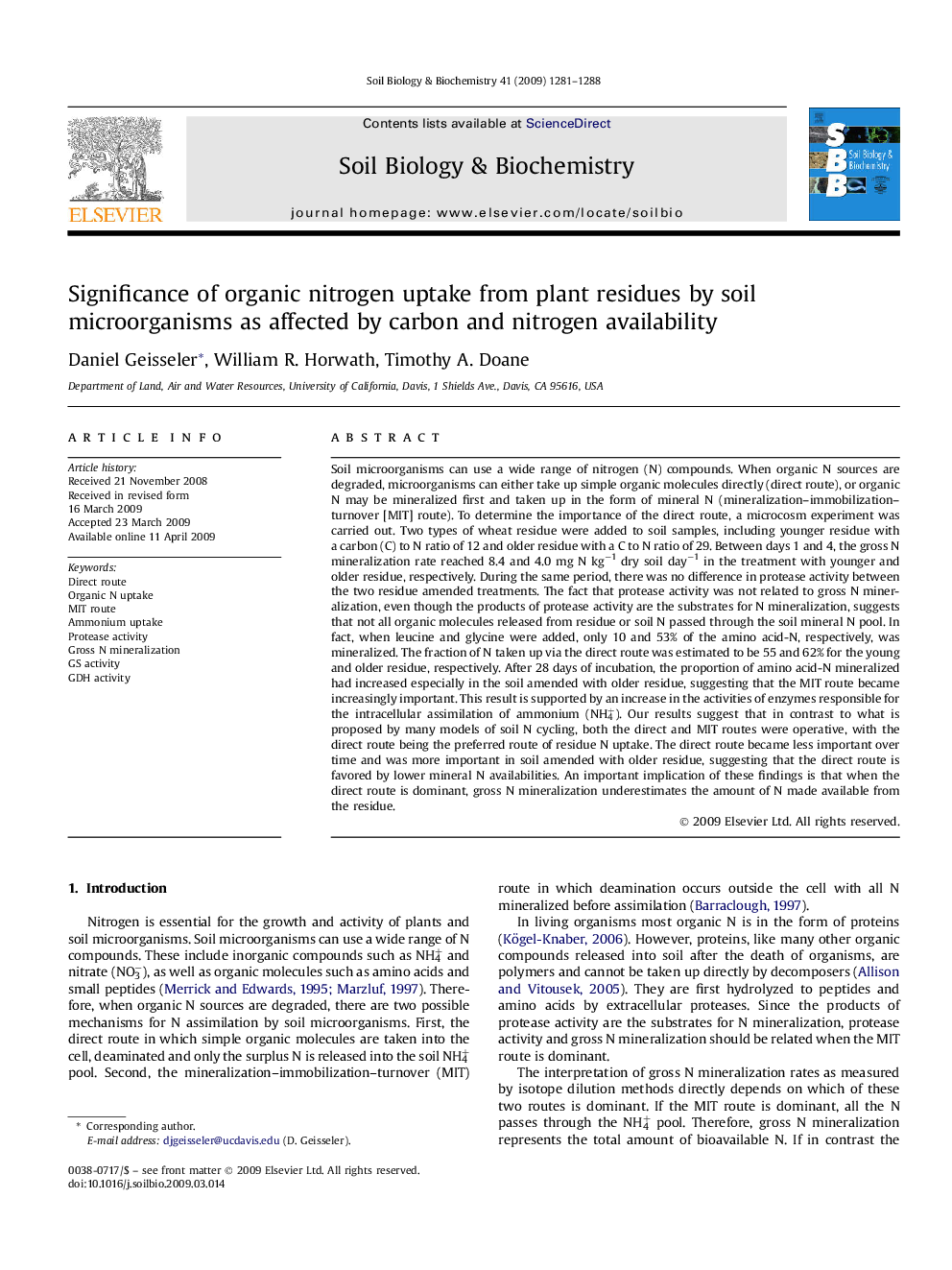| کد مقاله | کد نشریه | سال انتشار | مقاله انگلیسی | نسخه تمام متن |
|---|---|---|---|---|
| 2025631 | 1070004 | 2009 | 8 صفحه PDF | دانلود رایگان |

Soil microorganisms can use a wide range of nitrogen (N) compounds. When organic N sources are degraded, microorganisms can either take up simple organic molecules directly (direct route), or organic N may be mineralized first and taken up in the form of mineral N (mineralization–immobilization–turnover [MIT] route). To determine the importance of the direct route, a microcosm experiment was carried out. Two types of wheat residue were added to soil samples, including younger residue with a carbon (C) to N ratio of 12 and older residue with a C to N ratio of 29. Between days 1 and 4, the gross N mineralization rate reached 8.4 and 4.0 mg N kg−1 dry soil day−1 in the treatment with younger and older residue, respectively. During the same period, there was no difference in protease activity between the two residue amended treatments. The fact that protease activity was not related to gross N mineralization, even though the products of protease activity are the substrates for N mineralization, suggests that not all organic molecules released from residue or soil N passed through the soil mineral N pool. In fact, when leucine and glycine were added, only 10 and 53% of the amino acid-N, respectively, was mineralized. The fraction of N taken up via the direct route was estimated to be 55 and 62% for the young and older residue, respectively. After 28 days of incubation, the proportion of amino acid-N mineralized had increased especially in the soil amended with older residue, suggesting that the MIT route became increasingly important. This result is supported by an increase in the activities of enzymes responsible for the intracellular assimilation of ammonium (NH4+). Our results suggest that in contrast to what is proposed by many models of soil N cycling, both the direct and MIT routes were operative, with the direct route being the preferred route of residue N uptake. The direct route became less important over time and was more important in soil amended with older residue, suggesting that the direct route is favored by lower mineral N availabilities. An important implication of these findings is that when the direct route is dominant, gross N mineralization underestimates the amount of N made available from the residue.
Journal: Soil Biology and Biochemistry - Volume 41, Issue 6, June 2009, Pages 1281–1288